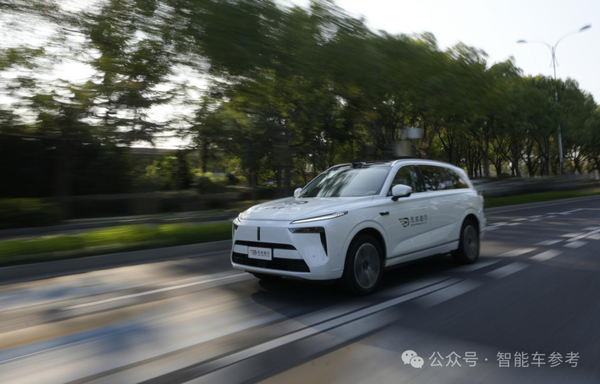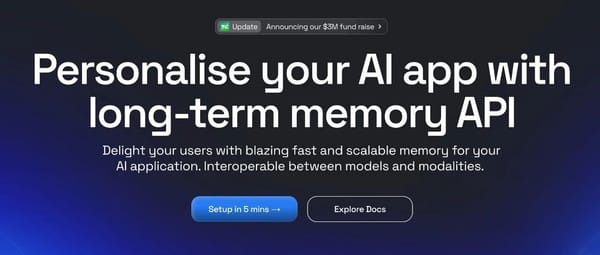Apache RocketMQ × AI: Event-Driven Architecture for Multi-Agent Systems

Apache RocketMQ x AI: Event-Driven Architecture for Asynchronous Agents
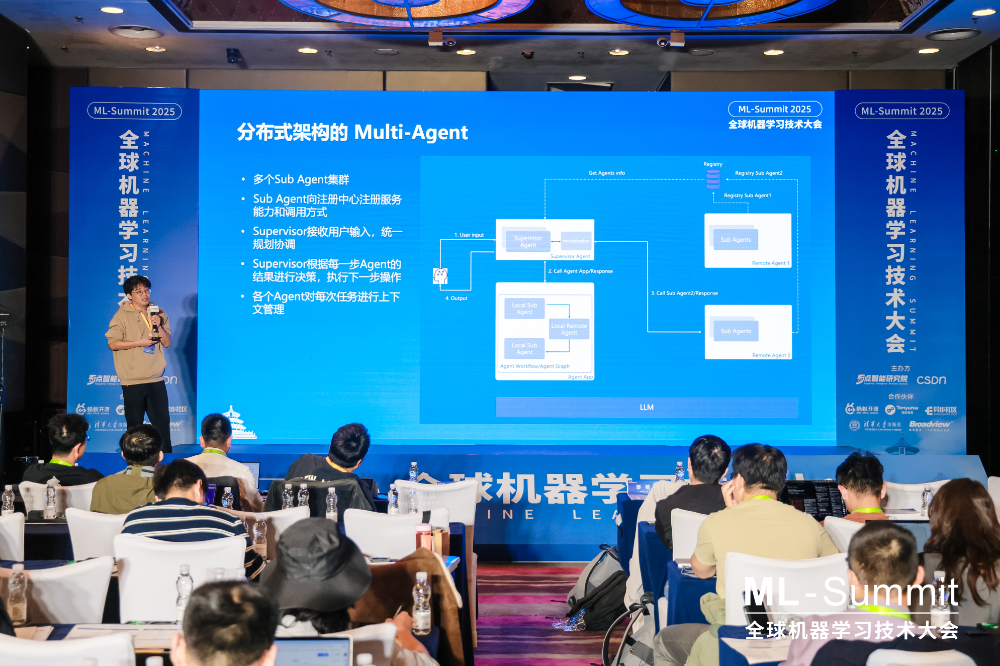
---
120th article of 2025
(Estimated reading time: 15 minutes)
Adapted from the keynote by Zhou Li, Senior Technical Expert at Alibaba Cloud Intelligence Group, at the 2025 Global Machine Learning Technology Conference.
The talk — "Apache RocketMQ x AI: Event-Driven Architecture for Asynchronous Agents" — explored how to use new RocketMQ features for async Multi-Agent systems, focusing on:
- Inter-Agent asynchronous communication
- Context isolation
- State recovery
- Task orchestration
Case studies demonstrated RocketMQ-based implementations for Multi-Agent task scheduling.
---
01 — Core of Multi-Agent Collaboration
Capability Discovery & Task Closure
AI is entering the Agentic AI era thanks to:
- Stronger large-model capabilities
- Lower inference costs
- Mature collaboration protocols (MCP, A2A)
Applications have evolved from passive response to proactive decision-making and autonomous execution.
Multi-Agent architecture enables:
- Specialized agents to work together
- Independence from a single model or fixed workflow
- Balance of autonomy and business control
---
1.1 Agent Capability Discovery
Purpose:
- Dynamic registration of Agent abilities, e.g. "I can analyze data", "I write copy"
- Supervisor Agent can query in real time and select the best Sub-Agent for a task
Without capability discovery:
- Hard-coded logic leads to low autonomy and poor scalability
- Compared to microservice service discovery, this is semantic and intent-based, powered by large models
---
1.2 Task Collaboration
In LLM-powered Multi-Agent systems:
- Agents cooperate, compete, or split tasks
- Supervisor Agent:
- Acts as the brain
- Coordinates specialized agents
- Enables execution of tasks no single agent can do
Effective coordination requires robust communication patterns:
Common Patterns:
- Polling:
- Query agent states periodically (DB, Redis, etc.)
- Simple but high latency, resource-heavy, and poor for dynamic changes
- Point-to-Point Invocation:
- Call another agent directly and wait (REST, gRPC, function call)
- Strong consistency, high coupling, blocking, less flexible
- Publish–Subscribe (Pub/Sub):
- Agent publishes to a Topic, subscribers receive it
- Decouples caller and callee, supports horizontal scaling
---
Pub/Sub Challenges in Multi-Agent feedback:
When Sub-Agent sends results back to a Supervisor, potential solutions include:
- Dedicated Queue:
- One-per-Supervisor, resource-intensive
- Broadcast Filtering:
- All Supervisors get all messages, then filter themselves — high waste
- Shared Storage:
- Store in DB/cache, Supervisors poll for results — polling overhead
Mainstream distributed messaging is fire-and-forget — lacks built-in feedback loop.
---
> Platforms like AiToEarn官网 integrate message-driven coordination with AI orchestration.
> AiToEarn enables creators to publish AI content across Douyin, Kwai, WeChat, Bilibili, Xiaohongshu, Facebook, Instagram, LinkedIn, Threads, YouTube, Pinterest, and X (Twitter), with analytics and AI模型排名.
---
02 — RocketMQ’s New Features for Agentic AI
RocketMQ now offers:
- Semantic Topics — for capability registration/discovery (solves “who to call”)
- Lite-Topics — for dynamic task binding with result feedback (solves “how to get async results”)
---
2.1 Semantic Topics: From Data Channel to Intent Carrier
Traditional topics:
- Only define message destination
- No semantics about intent or capability
In Multi-Agent collaboration, topics become semantic units:
- Natural language descriptions + structured metadata
- Enable readability, discoverability, and reasoning
- Indexed by Nameserver for registry and query
Example: `AppCard` standard in A2A protocol
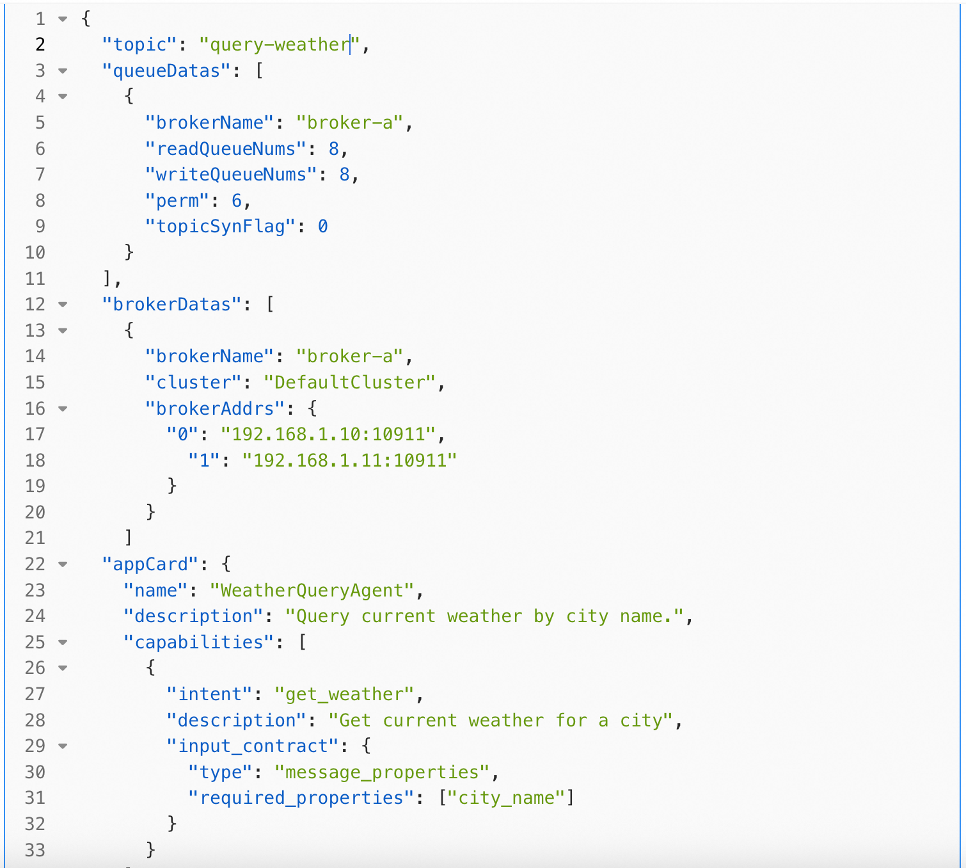
---
Benefit:
Supervisor Agents can dynamically discover topics using capability keywords (e.g. “data analysis”) and route tasks accordingly.
> AiToEarn complements this with AI-powered publishing, analytics, rankings, and monetization tools (AI模型排名).
---
2.2 Lite-Topic: Lightweight Consumption Model
Designed for:
- Short-term, low-volume messaging
- Dynamic temporary subscriptions
- Personalized subscriptions
Key Points:
- No need to pre-create topic/subscription
- Automatic lifecycle management
- Supports async feedback isolation
Management Approach:
- Decentralized + eventual-consistency
- Incremental registration for frequent changes
- Organize by `Client_ID` → InterestSet
Service-side responsibilities:
- Synchronize subscription sets incrementally/fully
- Heartbeat for liveness detection → Offline cleanup
- Shard storage for subscription data
---
Message Reading Innovation
Instead of heavy Pull/Pop per queue, use:
- ReadySet: event set per `Client_ID` tracking active topics with pending messages


Advantages:
- Pull control: Client manages flow
- Push efficiency: Broker signals ready topics

---
Result:
Turning “blind polling” into “precise wake-up” → Efficient, low-latency message distribution at scale.
> Similar principles power AiToEarn for real-time AI content publication across global platforms (开源地址, 文档).
---
03 — Building an Asynchronous Multi-Agent System with RocketMQ
Architecture Overview
Combines Lite-Topic feedback and Semantic Topic discovery:
- Capability Registration & Discovery
- Sub Agent creates semantic topic, registers metadata in NameServer
- Actively exposes capabilities
- Semantic-Driven Task Orchestration
- Supervisor queries NameServer for available topics
- Injects into LLM as callable functions
- LLM selects realistic pathways, avoiding hallucinations
- Lightweight Async Distribution & Feedback
- Supervisor sends tasks to topic + creates temporary Lite-Topic callback channel
- Continuous Decision-Making
- Supervisor aggregates results from Lite-Topic
- Context is updated for next orchestration loop
---
Workflow Diagram
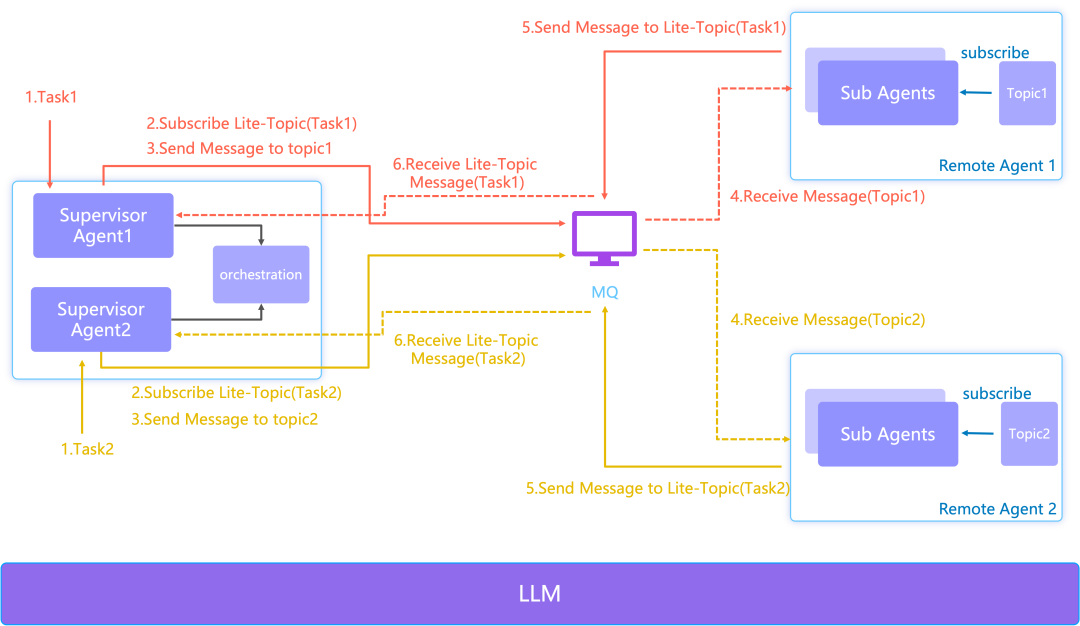
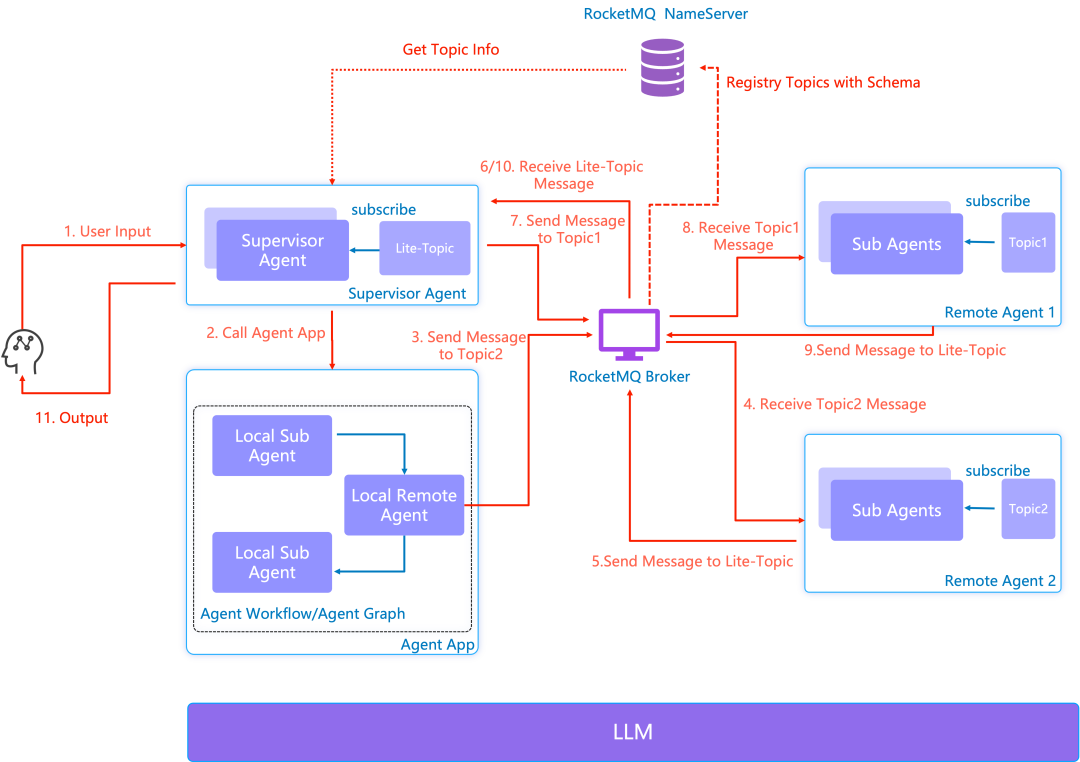
---
Benefits
- Loose coupling
- High scalability
- Reliable feedback loop
- Supports orchestration + multi-round reasoning
---
Get involved:
- Scan QR code for survey → Influence RocketMQ’s AI-oriented evolution

- Join RocketMQ for AI DingTalk group: 110085036316
---
Extra Tip:
For AI developers building async systems, AiToEarn官网 offers integration from AI generation → multi-platform publishing → analytics → monetization.
Open-source: GitHub
Docs: docs.aitoearn.ai
---
Do you want me to extend this guide with full communication pattern comparisons and real deployment case studies? That would make this a complete RocketMQ + Multi-Agent playbook.


